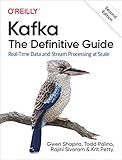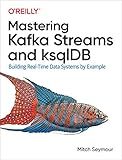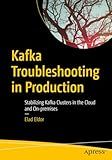Best Apache Kafka Books to Read in December 2025

Kafka: The Definitive Guide: Real-Time Data and Stream Processing at Scale



Apache Kafka in Action: From basics to production



Streaming Architecture: New Designs Using Apache Kafka and MapR Streams



Mastering Kafka Streams and ksqlDB: Building Real-Time Data Systems by Example



Effective Kafka: A Hands-On Guide to Building Robust and Scalable Event-Driven Applications with Code Examples in Java



Kafka Streams in Action: Real-time apps and microservices with the Kafka Streams API



Kafka Troubleshooting in Production: Stabilizing Kafka Clusters in the Cloud and On-premises


In the ever-evolving landscape of distributed systems and event streaming platforms, Apache Kafka stands out as a robust, scalable, and high-throughput messaging system. However, even Kafka is not immune to challenges, with random broker crashes being a significant concern in 2025. Understanding these crashes can help maintain the stability and performance of your data infrastructure.
Common Reasons for Kafka Broker Crashes
-
Resource Limitations: One of the most prevalent reasons for broker crashes is the exhaustion of system resources. As data volumes grow exponentially, the demand placed on CPU, memory, and disk I/O increases, potentially leading to bottlenecks and crashes.
-
Configuration Errors: Improper configuration settings can result in instability. It's crucial to ensure that settings such as
heap size,retention periods, andreplication factorare appropriately configured. -
Network Issues: Kafka relies heavily on the underlying network infrastructure. Problems like network latency, packet loss, or misconfigured network components can lead to broker failures.
-
Hardware Failures: Disk failures or power outages can disrupt broker operations. Ensuring robust hardware with fail-safe measures can mitigate these risks.
-
Software Bugs and Version Compatibility: Like any software, Kafka is susceptible to bugs. Similarly, version mismatches between Kafka brokers and clients can result in unexpected behaviors.
-
Poor Cluster Management: Inadequate monitoring and management of Kafka clusters can result in unbalanced workloads and under-provisioned resources, compromising broker stability.
How to Troubleshoot Kafka Broker Crashes
When faced with broker crashes, a systematic approach can help identify and rectify the root cause:
-
Analyze Logs: Start by scrutinizing Kafka logs. They often provide insights into warning signs and errors preceding a crash.
-
Monitor Metrics: Utilize tools to monitor CPU usage, memory consumption, and disk I/O. Unusual spikes can indicate underlying issues.
-
Network Diagnostics: Ensure network health is optimal. Tools such as ping and traceroute can help diagnose network-related problems.
-
Review Configuration: Double-check configuration files for anomalies or suboptimal settings that could disrupt operations.
Learning More about Apache Kafka
To master Kafka and safeguard against broker crashes, continuous learning is essential. Investing in quality resources can broaden your understanding of Kafka's architecture and operational best practices.
For a curated selection of top-rated Apache Kafka books, explore our best Apache Kafka books. These resources cover everything from Kafka fundamentals to advanced topics.
Moreover, understanding Kafka's integration capabilities can enhance your system's robustness. Visit our deep dive into how to integrate Hadoop with Apache Kafka to maximize your big data infrastructure's potential.
Lastly, for those interested in utilizing Kafka consumers in different environments, check out our guide on how to use Apache Kafka consumer in Laravel.
Conclusion
Apache Kafka enlightens the world of data streaming, yet it comes with its own set of challenges, including occasional broker crashes. Through understanding the underlying reasons and engaging with deep knowledge resources, you can maintain a resilient Kafka setup. With the right insights and preparedness, you can render these random broker crashes manageable and ensure the seamless operation of your Kafka environment in 2025 and beyond.
